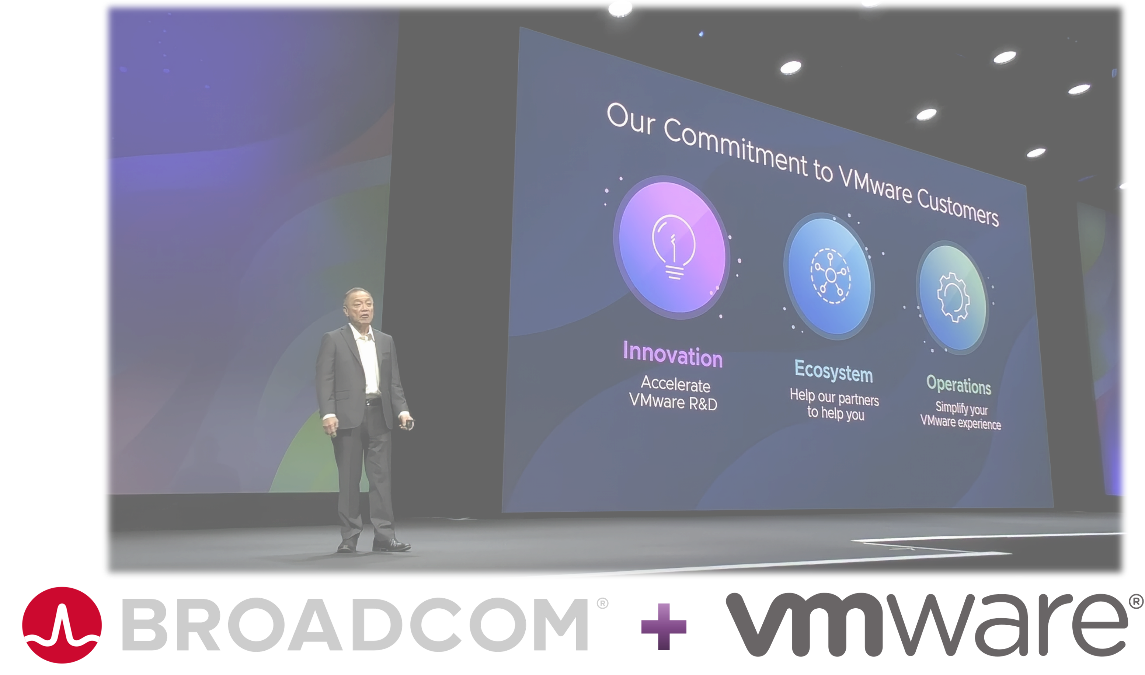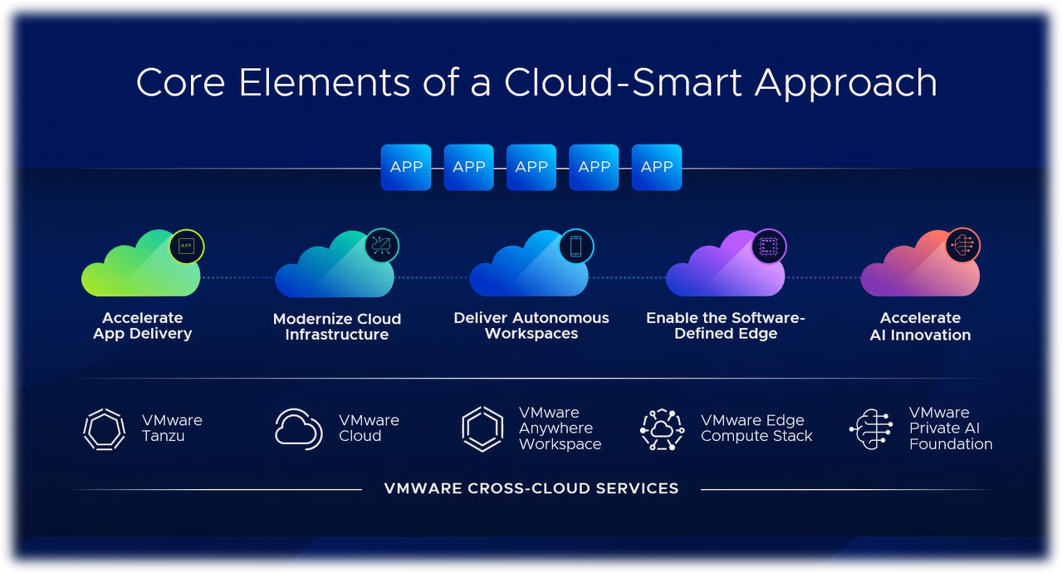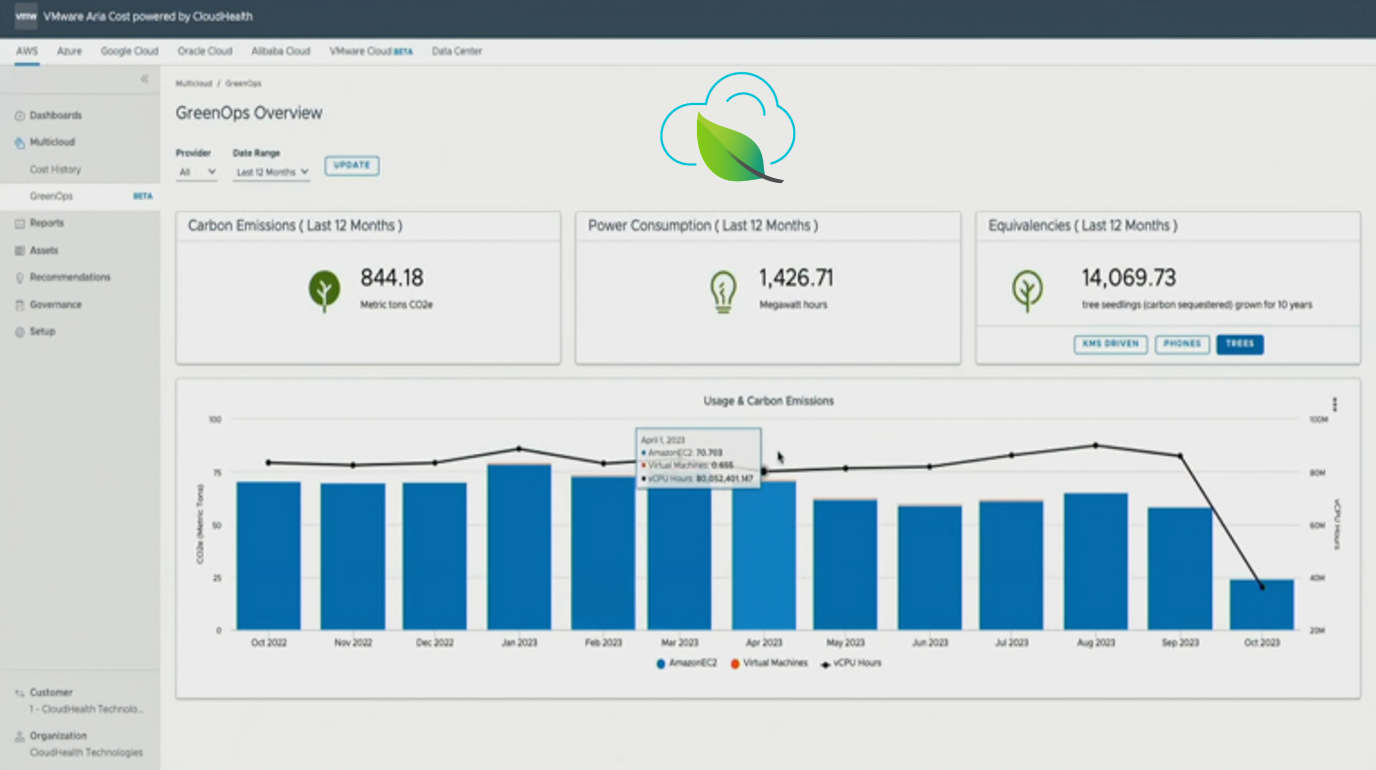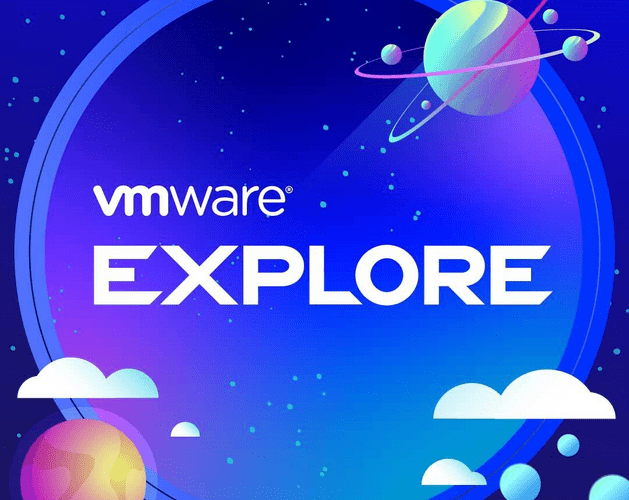Twenty-five years ago, in sunny Palo Alto, California, five innovative technologists brought together their collective experience and passion for disruption and created VMware. Since then, VMware has led the industry towards a fully software defined datacentre, providing incredible freedom of choice to their worldwide network of over 500,000 customers. When public cloud became the next major wave of disruption in 2021, VMware embraced it with a revamped Cross Cloud Services strategy – a healthy dose of portfolio rationalisation and interconnected features that provided a single platform to orchestrate public and private cloud from.
Today, VMware is experiencing more disruption, though this time in a very different form. At the time of writing, Broadcom’s $69 billion acquisition of the Californian tech giant is complete, leaving many to wonder what is next and what will change.

VMware Explore 2023
Attendees of this year’s annual European conference in Barcelona (Monday 6 November to Thursday 9 November) were eager to hear what this new partnership would entail. We were encouraged by a surprise guest at the keynote, as Broadcom’s CEO Hock Tan took to the stage and delivered three promises:
1. To accelerate the pace of innovation and step-up research and development (R&D).
2. To invest more into VMware’s channel ecosystem of Resellers and Managed Service Partners.
3. To make VMware’s products easier to deal with.
We were glad to hear a pledge for greater investment in R&D, which will be essential if VMware is to fully achieve its vision as set out two years ago. After all, in that time we have seen over a dozen projects (upcoming products and features that receive considerable R&D investment) reach maturity, so we know VMware’s investment brings real innovation. Those looking to aggregate their multi-cloud workloads into a unified common cloud operating model, adopt Artificial Intelligence in a private and controlled manner, and transform their applications to the cutting-edge of cloud native had a lot to come away with!
Let’s explore the highlights of this year’s European conference
Pillars across clouds

A refinement to the 2021 strategy for “Cross-Cloud-Services”, this year, gave audiences insight into the future core technology stack, that would underpin the VMware by Broadcom offering. VMware believes in providing customers the tools and platforms needed to operate with consistency and security across a plethora of mixed environments, public and private. For the last 12 months the poster child of VMware’s new “cloud-connected” revolution has been vSphere+, so when VCF 5.1 was released for general availability on 7 November, we were not surprised to see the same level of cloud integration, enabling customers with a new SaaS provided control plane for keyless entitlement, lifecycle management and fractional consumption.
On the topic of consumption, we are expecting a large-scale consolidation across the portfolio, for everything from vSphere+, through the Aria suite of Management and Aggregation tooling towards a full SDDC with VCF. There is much that can be said for streamlining the procurement of these technologies, and our hope is that this strategy will remove many headaches at point of sale.
Missing from this new strategy was significant mention of Virtual Desktop Infrastructure (VDI) technologies, notably VMware Horizon. During the pandemic, many businesses scaled remote working operations at a speed that could not have been achieved on premises at the time - particularly due to the shortage of necessary hardware available. What this created was an incredibly competitive market landscape for VDI which really affected some of Horizon’s age-old sparring partners. Horizon has now been established as its own business unit within VMware, and although the future is rather unclear, we understand while procuring Horizon products and support services will be possible, it cannot be within the same enterprise contract as other VMware products and services, moving forward.
vSAN Max caught the attention of customers with heavy storage operations, available at the time of writing as a separate license to traditional vSAN. This new Disaggregated Hyperconverged technology (a modern phrase used to describe solutions that scale software defined storage independently from VM hosts) uses Direct Storage Access to turbocharge performance sensitive operations. Customers will be able to scale these datasets as high as ~7 Petabytes, with suggested use-cases such as Object Storage, Batch Processing, Real-Time operations, Datalakes and, of course, Machine Learning. In fact, we think that there is a clear correlation between VMware’s investment in storage architecture and the next ‘big thing’ to hit the industry since the advent of Cloud: Artificial Intelligence.
All in on A.I
This year all the noise was around Machine Learning and Generative AI. What we feel separates this modern use-case from others in the past is a common understanding and appreciation from audiences of its inherent power. Not least because IT teams are now being asked by a multitude of departments for AI solutions, but also because AI is finding its way into the hands of providers and consumers alike. Whether ChatGPT, Microsoft Copilot or OpenAI - we all get it, but it's often unclear where and how to build a private and controlled offering.
Organisations might need to minimise their intellectual property risk, have complete control over the language models they use and ensure that data cannot be shared externally. This last part is key, which is why VMware has struck up three key partnerships with nVidia, Intel and IBM to underpin their collaboration with Hugging Face, a leading Open-Source platform with over ~200,000 language models to choose from. Customers want to choose a platform with optionality built in so as new models become available, they can be quickly adopted, allowing them to curate an offering that suits their business’ needs. The partnership with Intel is interesting, challenging the notion that AI requires dozens of GPUs. Intel was quick to provide statistics that support the claim that running parallel processing on x86 can be as good, if not better than traditional GPU architecture.
But let’s assume for a second that some aren’t ready for a full AI platform, cloud-based or otherwise, and look to where these technologies can enhance existing tools and practices. We were delighted to see a new Intelligent Assistant showcased, currently in beta with Tanzu, NSX+ and Workspace One. The utility of these productivity features cannot be understated, with clear examples of day-to-day tasks amped-up and automated through simple instructions to an AI helper. Whether IT professionals need to query best practices, compare the compatibility of current and future state architecture, write command line instructions, compare stats from one nuanced reporting period to another, or simply find their way to an elusive dashboard, the Intelligent Assistant features had genuine application and we are excited to see where VMware take this next.
Greenlit and sustainable

It has often been the mantra of VMware to recommend the “Right Place for the Right Workload”. Now they can really help locate the right place. Enter GreenOps, by Tanzu CloudHealth, the technology that has powered Softcat’s Cloud Fundamentals Service for years. A fantastic beta was delivered to showcase how VMware are empowering their customers to make intelligent decisions with workload placement and track progress towards organisational ESG (Environmental, Social & Governance) goals.
Guidelines and frameworks to track against targets have actually existed within Aria Operations as well for a few years now, split into three broad headings: Green Supply, Clean Demand and Lean Operations. Users with access have had the ability to find insights as to potentially oversized workloads, suboptimal power management settings and where to snuff-out idle/zombie VMs. What will make Tanzu CloudHealth GreenOps so compelling, not least because of its friendly and clean interface, is its ability to collect important metrics from all cloud sources. Staying true to the mission statement of CloudHealth, aggregating the multitude of native data points from multi-cloud infrastructure is a clear differentiator against competing platforms today.
We’d like to leave you with a little blue-sky thinking, if we may. A culmination of 25 years’ hard work and innovation was showcased at a little stand, off the beaten path at this year’s Barcelona Expo. There, on a small screen with a dashboard HUB, multiple VCF and VMC environments were stitched together, no doubt using an enhanced HCX+ fabric, to create a true vision of multi-cloud; one where workloads and datasets were free to migrate at the user’s request. And if that wasn’t impressive enough, an automation script was running to migrate working sets to wherever the most appropriate, cheapest and most importantly cleanest source of energy was at that time. Reducing carbon footprint is everyone’s responsibility, and with the IT industry consuming as much as 2% of the world’s energy, it is promising to see powerful tools to control carbon emissions find their way into the hands of the right people.
If you’d like to find out more about Softcat’s VMware offering, please get in touch with your Account Manager or get in touch here.

